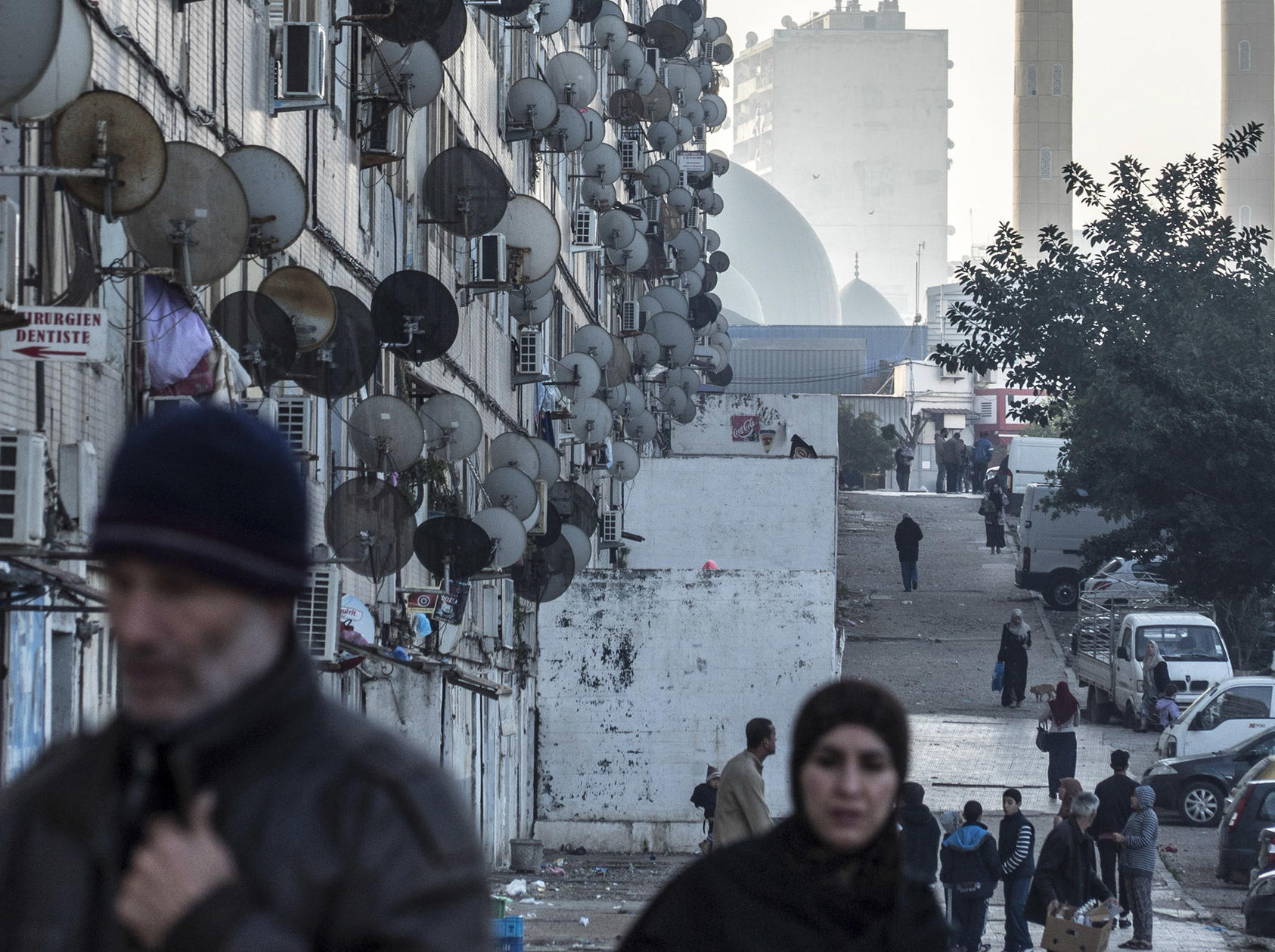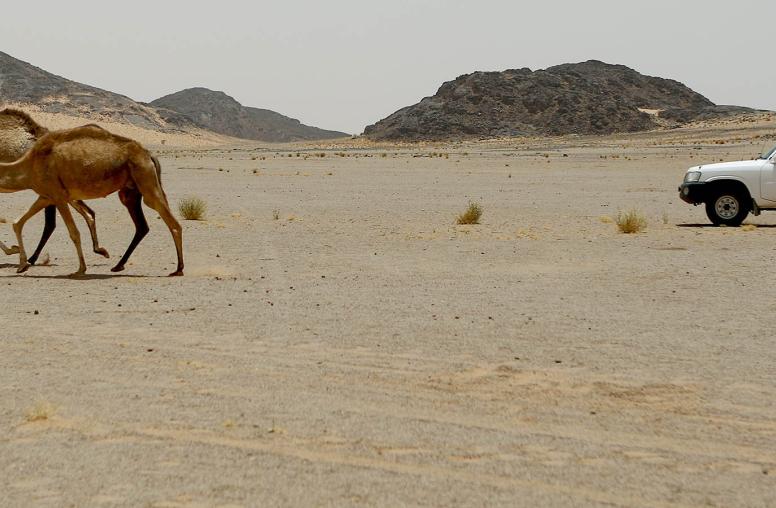Can Algeria’s Protest Movement Bring Fundamental Change?
Peaceful street protests removed a dictator but it will take more to change “le system.”
Last year, Algerians massed in peaceful protests against the authoritarian, 20-year presidency of Abdelaziz Bouteflika, prompting the military to force his resignation. The demonstrations have brought millions to the streets, demanding greater transparency in government and an end to pervasive corruption within the shadowy mix of military, business, and political elites who dominate the country. While the popular movement has forced once-unthinkable resignations and criminal investigations of powerful figures, its push for more a fundamental overhaul is stalled. The movement, called the Hirak, can continue its pattern of twice-weekly demonstrations, hoping for more government concessions. Or it can adapt its strategy to move beyond the current stalemate. Either approach could risk greater conflict.

The ability of the Hirak, and of Algeria, to evolve nonviolently will have significant implications for the stability of the region and Europe. Geographically, Algeria is Africa’s largest country and home to 41 million inhabitants, positioned on Europe’s southern border. In neighboring Libya, the collapse of state institutions following the popular revolution in 2011 created a safe haven for terrorists and opened a corridor for mass irregular migration into Europe. A similar collapse in Algeria would be catastrophic. Algerians’ restraint so far, in avoiding violence during the past year of power struggle, is rooted at least partly in vivid memories of the bloodshed of the 1990s, often referred to as the “black decade,” when violence between Islamist extremist groups and the security forces killed at least 150,000 people.
A Façade of Change
Amid persistent demonstrations last year, the government pressed ahead with presidential elections in an effort to end the constitutional crisis created by the abdication of President Bouteflika. Unsurprisingly, many voters boycotted, saying the vote was designed to sustain the status quo. The election authority announced that turnout was about 40 percent, a record low, but many international observers suggest that actual turnout was 10 to 15 percent. Abdelmadjid Tebboune, a former housing minister, was declared elected with 58 percent of the vote, enough to avoid a run-off.
Tebboune was backed by Army Chief of Staff Ahmed Gaïd Salah over others within le pouvoir whom Salah perceived as political threats. Le pouvoir has always been an amorphous group with competing centers of gravity that jockey for control of state institutions but collude to prevent major changes to the status quo.
Many Algerians were disappointed by Tebboune’s reappointment of so many government officials from the Bouteflika era; the Hirak clearly wants newer (younger) figures, untarnished by accusations of scandal and improbity. The cabinet announced in January included 11 ministers (nearly a third of the total) who served in Bouteflika’s executive. These holdovers were given the most important portfolios, including the Justice, Education, Energy, Internal Affairs, Finance and Foreign Ministries. Tebboune limited the military’s autonomy, appointing a loyalist to serve as the army’s acting chief of staff.
Publicly, Tebboune has promised to revise the country’s constitution and address the looming economic crisis. He appointed a law professor (and former political advisor during the Bouteflika era) to lead a committee of constitutional experts to propose reforms which will be considered by the parliament before ultimately being put forward in a popular referendum. Understandably, many Algerians are skeptical of Tebboune’s motives and will be watching to see if there is an effort to concentrate more authority in the presidency or extend presidential term limits.
Whither a Movement?
While Tebboune has consolidated his grip on power, the Hirak has maintained significant popular participation; an estimated 1 million Algerians demonstrated on the anniversary of the initial protests. But while popular support for the Hirak remains high among Algerians, the movement does not have identifiable leaders who speak on behalf of the protesters, formulate platforms for demands, or coordinate the large-scale demonstrations with other tactical efforts. This lack of conventional leadership reflects both the diversity of viewpoints and goals within the Hirak as well as the Hirak’s pattern of harshly rebuking any individual who attempts to take a leadership role.
The diversity within the Hirak is visible both in the symbols employed by demonstrators and their slogans. Some reject the current system, a demand expressed by frequent chants of “Dégage! Dégage!” (“Get out! Get out!”) during demonstrations.
More moderate demonstrators advocate for a redefinition of the relationship among the people, state, and the military but not a revolution. Many Algerians believe that the military saved the country, intervening to prevent Islamist parties from taking over politics and quelling the violence of the 1990s, the so-called “black decade.” Even today, the military is still the country’s most respected institution. But the entry of the military (and other security services) into politics has compromised the independence and competency of civilian government agencies and marginalized all meaningful political opposition.
Flags, specifically the ethnic minority Amazigh flag, feature prominently in the protests. In the early weeks of the demonstrations, the government tried to link the prevalence of the Amazigh flag to separatist or subversive elements but a popular backlash against the government propaganda was swift. Instead the flags are more often seen by those within the Hirak as a declaration of Algerian multiculturalism, drawing a contrast with the monocultural narratives traditionally advanced by the government. Flags supporting LGBTQ rights, Palestinian self-determination, and other causes are also often visible.
A wide spectrum of people and groups have tried to take a leadership role in the Hirak but have been rejected. At various points, more religiously conservative groups and individuals associated with the Bouteflika era have tried and failed to take on more prominent roles. Perhaps more striking has been the Hirak’s rejection of existing political parties including those that were not formally included in Bouteflika-era governments. According to Hirak demonstrators, all political parties that were able to operate during the Bouteflika era have been compromised and are therefore illegitimate. The rejection of these parties may appease the demonstrators’ appetite for ideological purity, but it has also marginalized important instruments of political mobilization and infrastructure that could be of use to a movement that is so diffuse.
Some within the Hirak see the lack of movement leadership as a point of pride and they point to the arrests and indictments of so many formerly high-ranking officials as proof that the Hirak’s tactics are working. Indeed, the Hirak has accomplished reforms previously viewed as improbable. However, the Hirak has not evolved its tactical repertoire beyond the twice weekly demonstrations, failing to adopt the tactics of historically successful nonviolent movements.
Successful political nonviolent movements are able to modulate their pressure on those in power, changing tactics as needed. Nonviolent movements use targeted boycotts and strikes, coordinated communication and counter-messaging campaigns, and the strategic co-optation of groups on the margins of those in power. These more advanced tactics are possible only once a more formal leadership structure coalesces. It’s possible to have a leaderless movement, but not a movement without leaders.
As a result, the Hirak today finds itself in a conundrum. The Hirak cannot achieve additional significant concessions without direct engagement with the Tebboune government. But, so far, any opposition group that meets with Tebboune is immediately discredited as a traitor to the cause. There are signs that the Hirak recognizes this predicament. In February, Hirak activists made an attempt to develop a coherent political platform at a conference in Algiers, but these developments have been slow.
While the Hirak has been slow to change its strategy, Tebboune has pushed ahead with speed. He has already welcomed to Algiers the presidents of Turkey and Tunisia, establishing himself as the legitimate head of state. And since December, government security services have increased steadily their violent repression of Hirak demonstrators, signaling the government’s intention to resist the movement’s demands.
A Visible Path Forward
The Hirak includes a diverse cross-section of Algerian society with different, sometimes incompatible, ideas about what additional concessions from le pouvoir are necessary or sufficient. Some clearly want the political system to be overturned while others are content to see the military’s role scaled back significantly and executive power curtailed. It is difficult to discern where on this spectrum the greatest number of Algerians find themselves but it’s clear that the existing social contract between the state and the people needs to be renegotiated.
The reluctance of le pouvoir to relax its control of the state means that a negotiated transition is the only peaceful path forward. This can be accomplished only if the Hirak empowers some of its members to engage in dialogue with the government. The structure of that dialogue should be part of the negotiations because a delicate balance is likely to be needed between complete transparency and some level of some level of privacy that allows both the government and the Hirak to make concessions or change positions without the judgement of vocal constituents.
Eventually, the most suitable path forward might be what political scientists call a “pacted transition,” in which the elites of an authoritarian regime accept negotiation and compromise with a democratic opposition movement in hopes of a softer, relatively survivable outcome. Given the advanced age of so many in le pouvoir, a pacted transition should take only several years—not decades—which should be appealing to those in the Hirak seeking more immediate reforms. In addition, a peaceful pacted transition would allow the government the space to address the country’s looming economic crisis, which would only be compounded by a violent or turbulent political transition.
The Hirak has shown no signs of fatigue and it’s clear that many Algerians feel their expectations for reform have not yet been met. Tebboune’s presidency is an affront to the Hirak, which sees it as the illegitimate product of a manipulated, predetermined electoral process. The reappointment of so many cabinet officials from the Bouteflika era signals only cosmetic changes. Algerians will be scrutinizing the proposed constitutional reform committee for signs of efforts to protect institutions from transparency and accountability. There is widespread popular support for new laws governing elections, information and the media, political parties, and most importantly, economic policies that modernize the country and diversify the rentier state.
While the Hirak has had incredible successes thus far, reducing the military’s role in the economy and politics, limiting executive authority, increasing space for political opposition and dissent, and instituting a system that holds corrupt leaders accountable will require the movement to evolve. Leaders who are empowered to speak on behalf of the movement must be allowed to emerge. A platform that aggregates the diverse demands of the Hirak must be articulated. Constructive interventions to solve the country’s real problems must be proposed. And negotiations with le pouvoir on a peaceful way ahead must begin.



